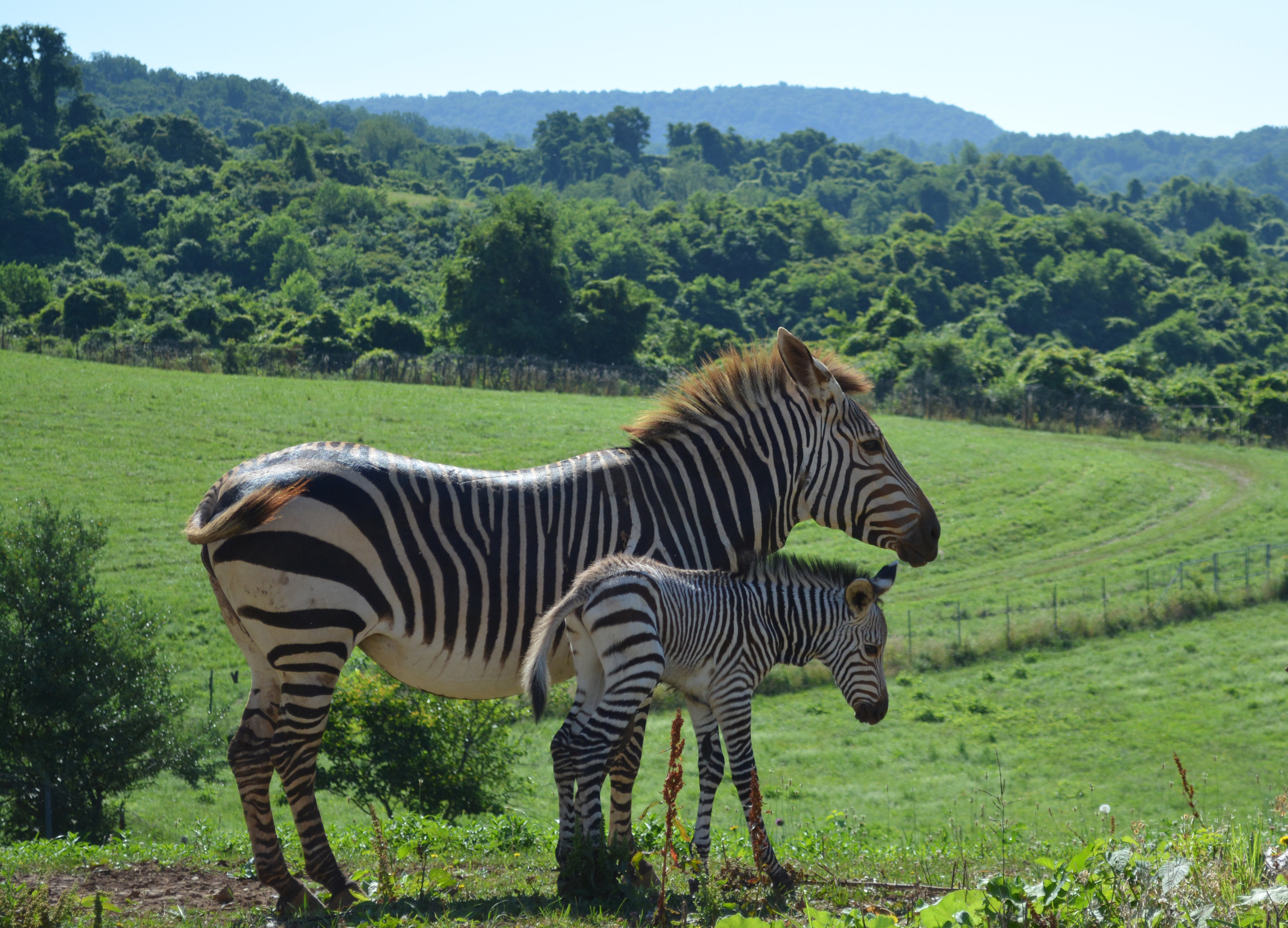History of the SCBI Complex

The Smithsonian Conservation Biology Institute (formerly known as the Conservation and Research Center) has been located in Front Royal, Virginia, since its founding in 1975. Acquisition of the property to support the Smithsonian's National Zoo's wildlife conservation programs follows a rich history of activities.
The U.S. Army obtained options on 42 100-acre farms in the vicinity of Front Royal, Virginia in 1909. At that time, ten years before the onset of World War I, the Army had embarked on a program to establish four major "remount depots" to supply horses and mules for military operations. The farms, together with intervening acreage, were later purchased, and by 1911 the government owned a tract of 4,200 acres. There was little forest remaining on the land in those days, but there was a bountiful supply of pasture and spring water. The Army planned on developing a large facility for the breeding and training of horses and mules for the U.S. Cavalry.
Construction of permanent buildings commenced in 1912 and continued until 1916 when the majority of the Ayleshire Quartermaster Remount Depot was completed.
The Army grouped the buildings together to form a central "Post." Eleven barn and stable complexes were constructed in outlying areas next to large pastures. To contain the horses and mules, several hundred miles of split rail fences were constructed using local chestnut. Lanes were built to provide access to all parts of the Center. A fenced corridor communicated directly with the railhead in Front Royal, where large numbers of animals were delivered to freight cars for overseas duty during the First and Second World Wars.
In its heyday, five blacksmith forges were busy daily, and staff of 400 civilian and military personnel carried on the business of breeding and training horses and mules. Mules and horses were also used for local transportation, and pulled mechanical mowers to mow the pastures. A complete veterinary crew cared for the animals, but there are scant records of their work. There is a reminder of that bygone era at the Horse Cemetery, where tombstones mark the graves of some of the more noteworthy steeds and Kentucky Derby winners, as well as a number of dogs. When the Smithsonian acquired the property, one old Army pensioner remained—a mule named "Old Tom", who is buried in an unmarked grave on Race Track Hill.
During the cavalry's occupancy, nearly all of the woodlands on the property were converted to pasture at one time or another. Comparisons of vintage aerial photos with current pictures, using Geographic Information System technology, reveal a significant increase in forested areas over the past 50 years.
A second building boom occurred during World War II, when the Center served as a K-9 training facility and housed 600 German and Italian prisoners of war. Several temporary structures were constructed in the vicinity of the alfalfa fields, but today only the foundations remain. Most of the rock piles scattered about the property date from this period. The POWs were kept busy as laborers on various farms in the Shenandoah Valley, and many prisoners longed to remain in the U.S. after the war.
In the past 20 years, four former German POWs have returned to visit the site of their incarceration. One of the Italian POWs was a muralist of considerable talent, and it is said that the staff wept when the derelict building containing his murals was torn down in the 1960s.
After World War II, the place of the cavalry in modern warfare was questioned, and despite considerable pressure from the "old Army", Congress passed legislation in 1948 transferring the land assets of the Remount Service to the U.S. Department of Agriculture. As part of this transaction, the Remount Depot became a Beef Cattle Research Station of the USDA. Fields that once had been home to thousands of cavalry mounts were occupied by Angus, Hereford, and Shorthorn cattle. The USDA, in conjunction with Virginia Polytechnic Institute and State University, raised cattle under a variety of experimental conditions to improve meat production of the various breeds. In 1972, the Station had Virginia's largest and the nation's fourth largest Shorthorn registry. In addition to the USDA functions, the Department of State used a portion of the Center's facilities as an Emergency Relocation site and a communications station. The State Department equipped several buildings as offices in case of national emergency—enough for the Secretary and 700 State Department employees. By 1972, all that was left of this activity was the communication station. In the winter of 1973, USDA decided to close down the Research Station's operations.
Dr. Theodore H. Reed, Director of the Smithsonian's National Zoo, had been searching for a captive breeding facility for over a decade when he heard of the possibility of obtaining the old Remount property. Other locations had been examined including La Plata, Maryland, Virginia's Great Dismal Swamp, and a 900 acre portion of Camp A. P. Hill in Virginia; but none could compare with the potential and existing on-site facilities offered by the old Remount Depot.
The property was occupied by the Smithsonian in 1974, and title to the land was received in 1975. The facility was named the Conservation and Research Center, and was staffed with a dozen employees from various zoo departments as well as a handful of former Remount and Cattle station employees. The Center's mission has evolved over the years, but its focus remains true to the original concept--a center for conservation-related activities of the Smithsonian's National Zoo and sister units of the Smithsonian Institution.
